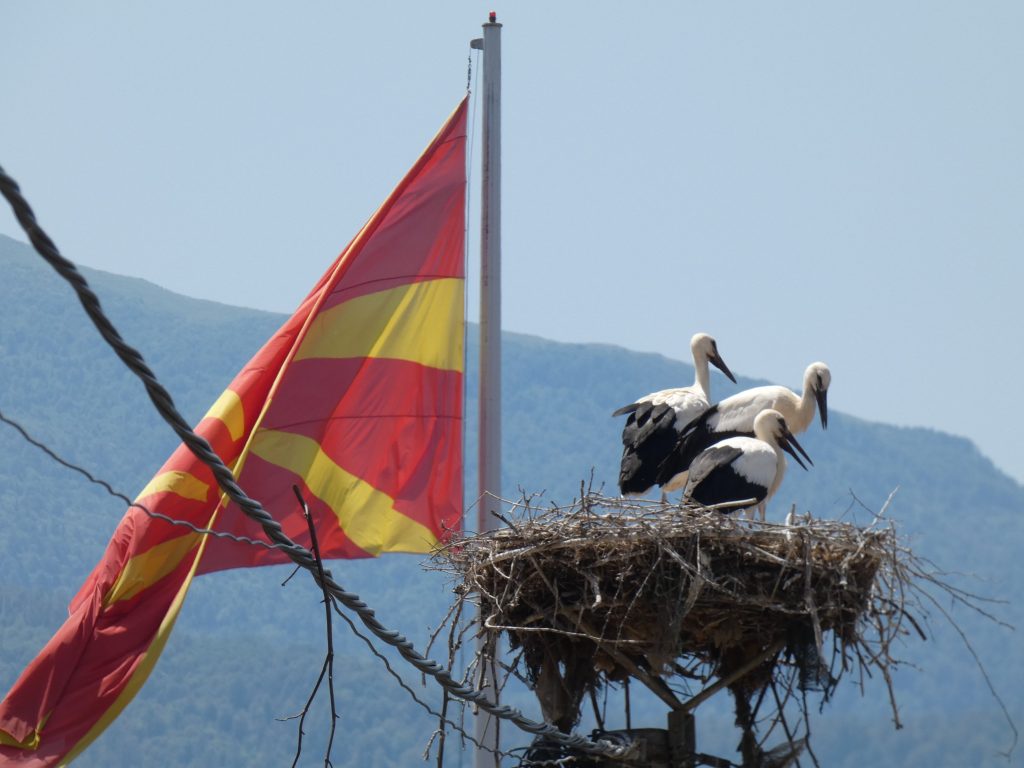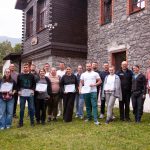
The Macedonian Ecological Society conducted a nationwide stork census. This census was carried out as part of the 8th European Stork Census, which takes place every 10 years, and in Macedonia, it was conducted for the first time in 2014. The research in Macedonia involved over 15 members and volunteers from the Macedonian Ecological Society (MES), and a total of 1,765 stork nests were recorded (1,388 active nests and 389 inactive nests — nests where no young were raised, were used as sleeping nests for storks, or contained only one adult bird). The total number of stork chicks raised was 3,934.
Storks mostly inhabit plains regions, and most nests are located in populated areas. The regions with the most stork nests are Pelagonia (541 nests) and Ovche Pole (326 nests). Corresponding to the number of nests, Pelagonia has the highest number of young storks, a total of 1,170, making it one of the most important regions for storks in Macedonia, followed by Ovche Pole and Kochansko Pole with 707 young birds, while Dolno Povardarie and Radovishko-Strumichka Kottlina also have high numbers of young, with 367 and 545 respectively. The three villages with the most stork nests are Stojakovo – 53 nests, Bogorodica – 45 nests, and Rosoman with 41 nests. Most nests are found on poles (around 76% of all nests), house roofs (18%), silos, and roofs and chimneys of factories, around 5%, while the fewest stork nests are located on trees — less than 0.2%.
Compared to the stork census conducted in 2015, there is an increase in the stork population; the number of active nests has grown from 837 to 1,388, representing a 60% increase in the stork population in the country over 10 years. On the other hand, there were 49% more young storks raised this year compared to 2014 (1,964). The white stork population is growing across Europe. This increase in the number of white storks is due to the successful implementation of stork protection measures, reduced agricultural pressure, and climate change, which also plays an important role because storks now find food more easily in winter conditions, thereby shortening their migratory path.
These results indicate the need for further protection and monitoring of storks in Macedonia, as well as the implementation of strategies to protect their habitats.
MES will continue to monitor the status of storks and inform the public about the need to preserve our natural environment.
Data on nest distribution and the number of young birds are available at www.ptici.mk.



